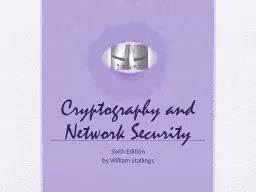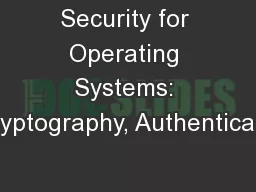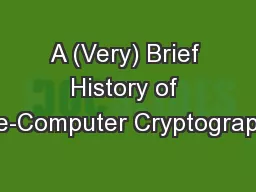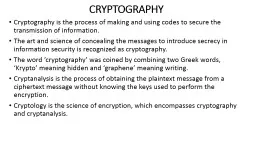PPT-Reduction-Resilient Cryptography:
Author : yoshiko-marsland | Published Date : 2018-01-04
Primitives that Resist Reductions from All Standard Assumptions Daniel Wichs Charles River Crypto Day 12 Overview Negative results for several natural
Presentation Embed Code
Download Presentation
Download Presentation The PPT/PDF document "Reduction-Resilient Cryptography:" is the property of its rightful owner. Permission is granted to download and print the materials on this website for personal, non-commercial use only, and to display it on your personal computer provided you do not modify the materials and that you retain all copyright notices contained in the materials. By downloading content from our website, you accept the terms of this agreement.
Reduction-Resilient Cryptography:: Transcript
Download Rules Of Document
"Reduction-Resilient Cryptography:"The content belongs to its owner. You may download and print it for personal use, without modification, and keep all copyright notices. By downloading, you agree to these terms.
Related Documents














